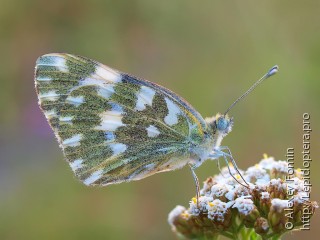Photo #21776: Pontia edusa
Imago

Click image to enlarge
Base gallery. Lateral/Underside. Alive insect.
Photo: Alexey Fomin. Image without retouching at the website. Identified by: Alexandr Zhakov
Date and time, location shooting/catching: 2010-07-11 20:43:00, Moscow Region
Comments on this image
Your comment
Please, create an account or log in to add comments.
Other photos Pontia edusa



























































All large size images of Pontia edusa on one page
Please, create an account or log in to upload your photo